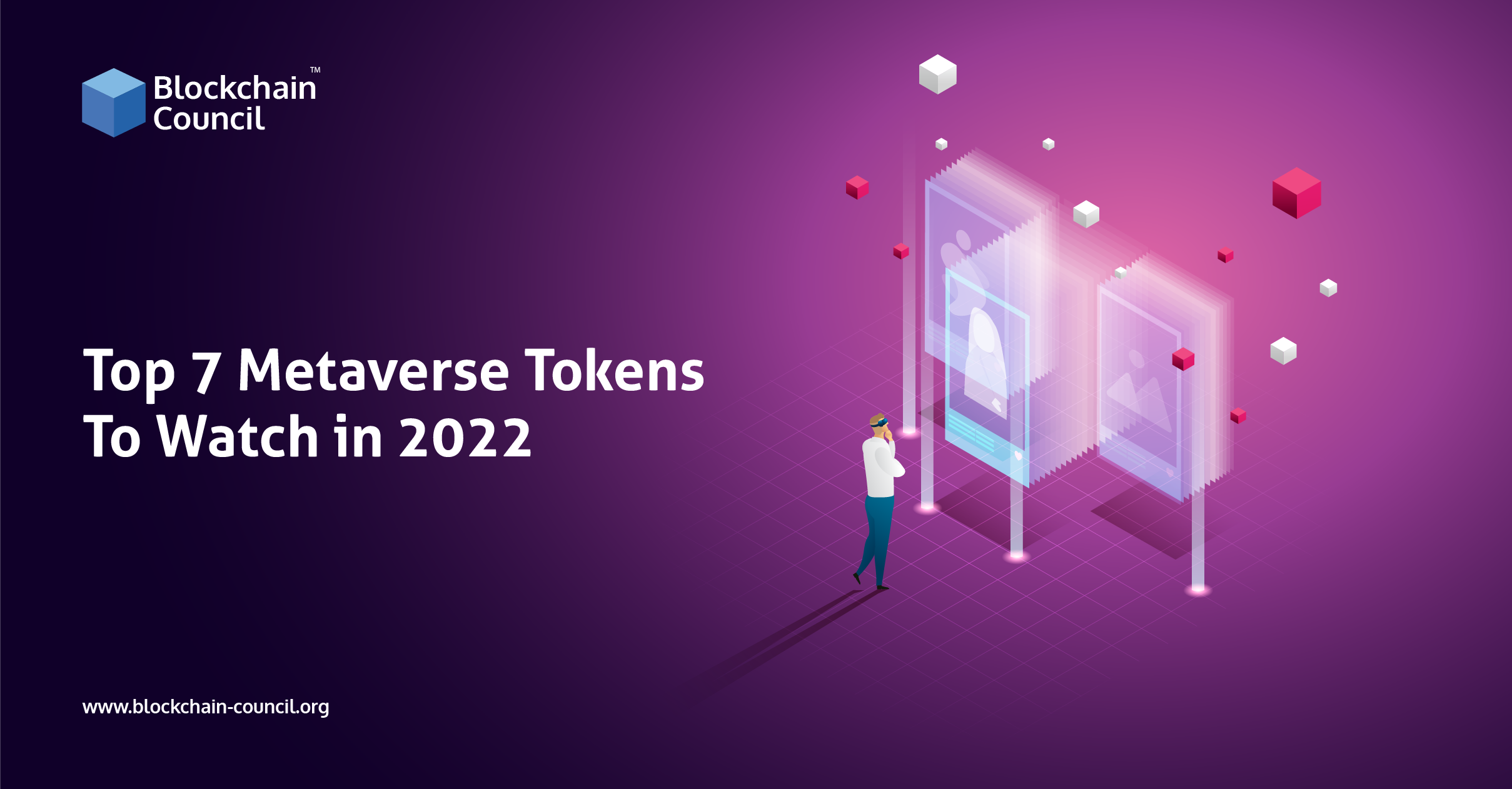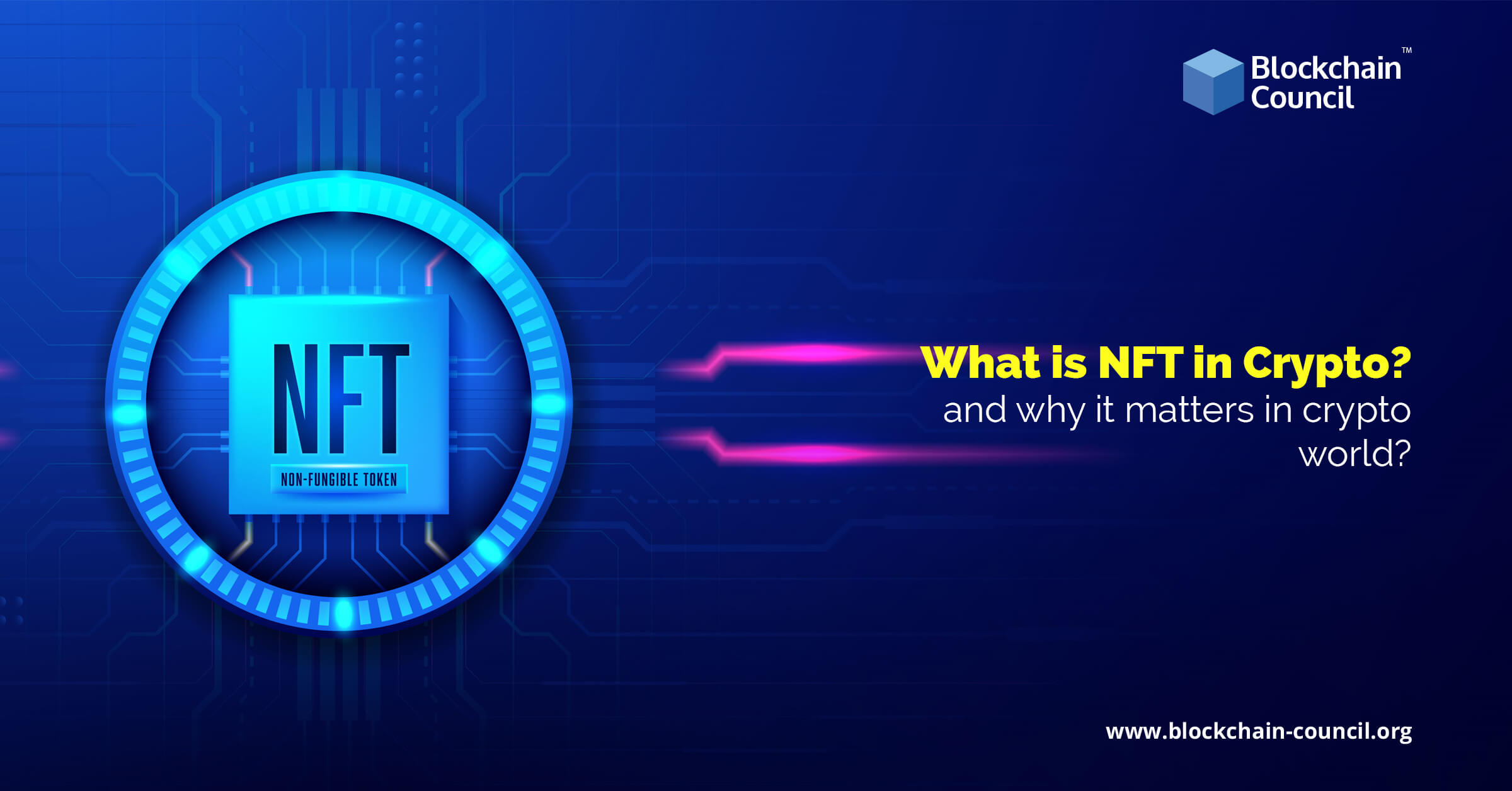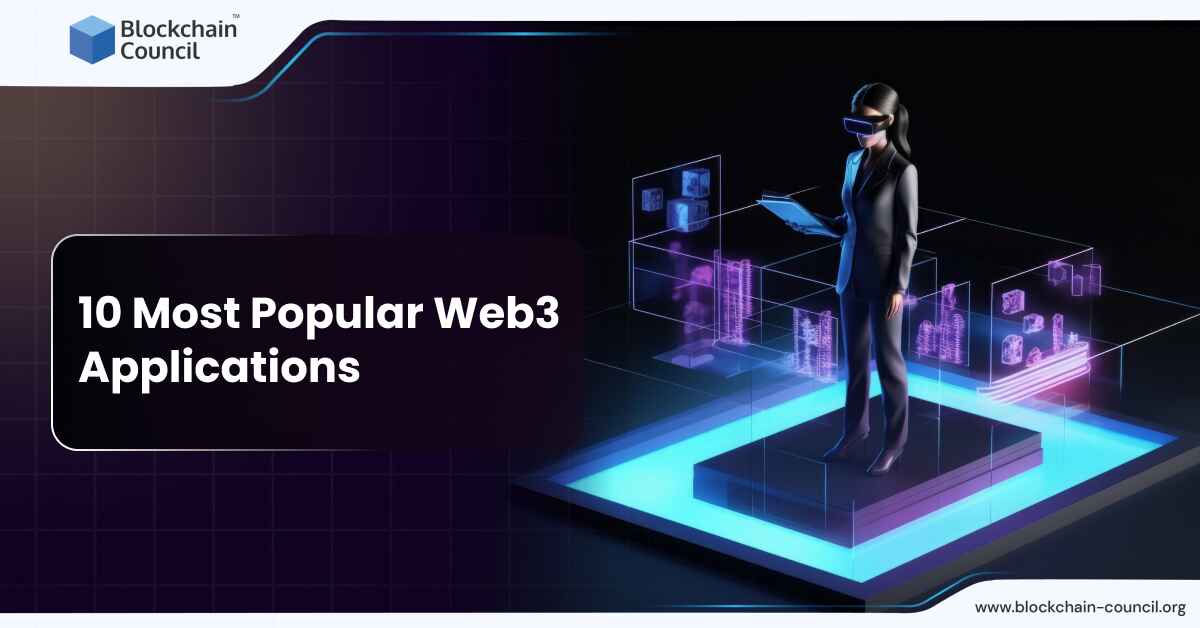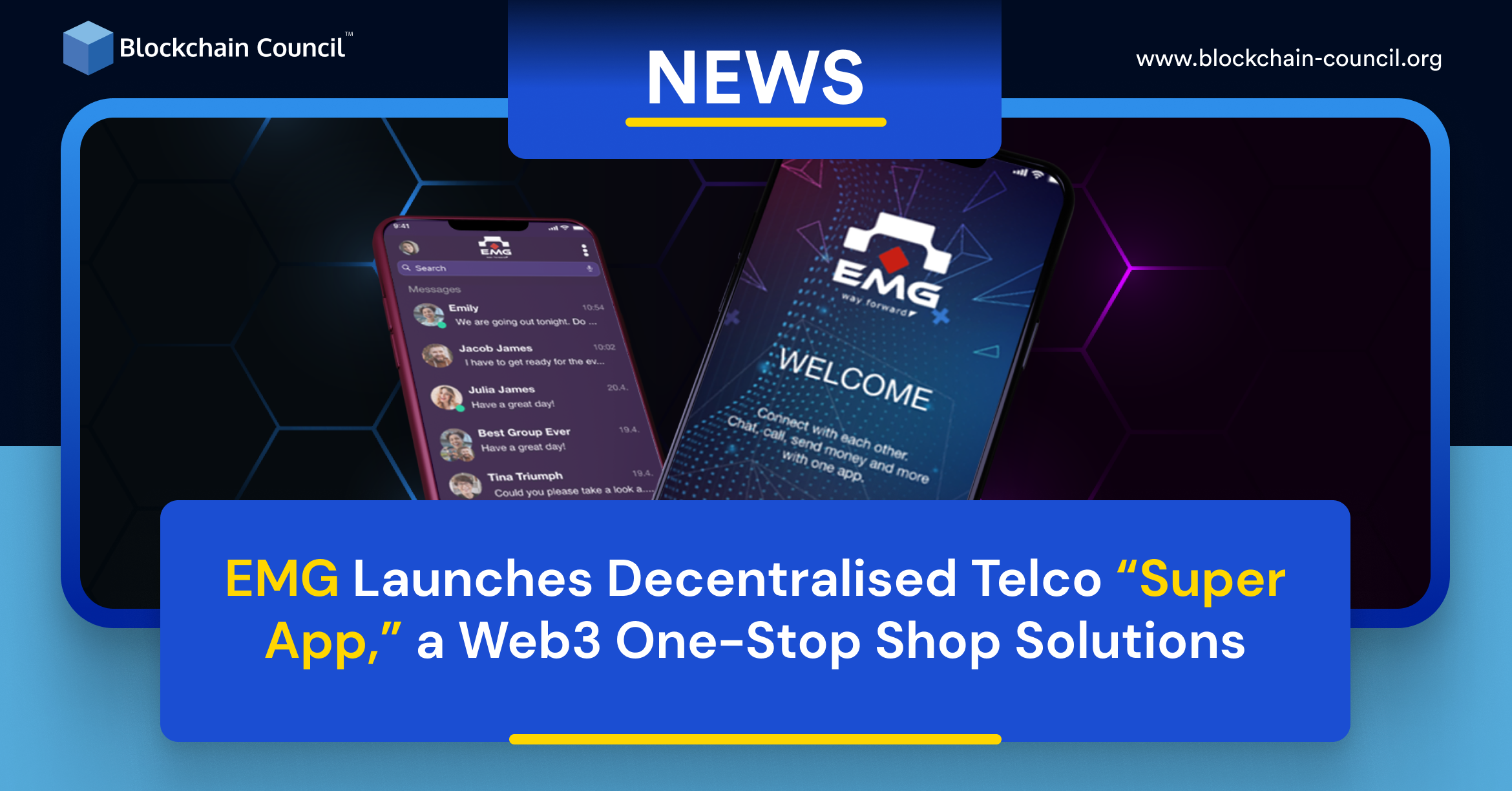
- Blockchain Council
- September 17, 2024
Summary:
- Web 5.0 is the next step in the evolution of the internet, which aims to provide a decentralized platform to users while also incorporating human emotions through the use of artificial intelligence.
- The limitations of previous versions of the internet include a lack of control over data and a lack of emotional intelligence.
- Web 5.0 combines the best of Web 2.0 and Web 3.0 while taking semantic Web to the next level and supporting global media connection.
- It is being developed by the financial company of ex-Twitter CEO, Jack Dorsey, and aims to provide complete decentralization and control of user data.
- This version of the Web will work through the implementation of emotional intelligence into the internet, with the help of blockchain, AI, and deep learning.
- Web 5.0's features include control over identity, a decentralized platform for storing data, and a free-flowing environment for creators to develop decentralized applications.
- Compared to previous versions of the internet, Web 5.0 promotes complete decentralization and transparency, while ensuring complete control of user data remains with the user.
Are you hearing of Web 5.0 for the first time? Well, the world is still discovering Web 3.0, and now the transformative version of the internet, Web 5.0, is here. Although you don’t have to worry, we are here to take you through the basics and the extremes of Web 5.0. You will first need to have a basic idea of what Web 5.0 means and all that it stands for. Gradually, this guide will take you through every bit of information that you will require to learn more about Web 5.0.
The internet was first introduced to this world in 1993, and since then, there have been rapid developments in various fields due to the internet. It was created in order to generate an online directory for the books and records of the companies. From there, the first generation of the internet offered surfing, e-commerce, and getting online material to read. It was more like an online storage of shops, books, and other records. Then came the second generation of the internet, which brought the whole world closer. It offered social media and communication to people. People were able to stay connected with one another through their devices. Moreover, a lot of applications were also created that used the internet to provide useful output.
Now the world is looking upon the next stage of the internet, Web 3.0. It offers complete freedom and control to the users over their data. But still, there are certain limitations that Web 3.0 alone cannot nullify. This is why, straight after Web 3.0, Web 5.0 was introduced to the world. There are not many people who are aware of this next step. It is the collaboration of Web 2.0 and Web 3.0 in various manners. This is why it is even called Web 5.0. We are going to learn a lot about the evolution of the internet and how Web 5.0 is a big step for the future to come. So, let’s take a dive into the evolution of the internet and learn about Web 5.0.
Evolution of the Internet to the Way It Is
We have all been using the internet for a very long time. Earlier, the internet was just meant for surfing on various Websites and talking to your friends through Facebook Messenger. Even WhatsApp came later, and then people were able to talk to one another seamlessly. Whatsapp replaced video calls through Skype and provided a better platform to be connected with people. Even the applications then started to use the internet and give better entertainment to the users. Online games and youtube started to grow with time. This was the evolution of the internet to the way it is currently.
In order to understand what Web 5.0 is all about, we will need to have a basic idea about all the versions of the internet. This guide will take you through the evolution of the internet from the first generation to the way it is currently and what the future holds for it.
Web 1.0
The first iteration of the internet came out in 1993. It was not much, to begin with, as it was created to maintain an online storage system for the corporate world. They could keep their digital files stored in an online library and access them anywhere they wanted to. Slowly, companies started to create their own Websites and post various products on them and created the internet as a place for getting various products, books, and online records. The first version of the internet was a read-only application and was still spreading like wildfire across the globe. It served the primary role for all the major tech giants, as we know them today, to set up their online presence.
Web 2.0
Now, the internet is growing rapidly, and tech experts can see the potential it has to connect people globally. So, the second version of the internet was more focused on providing a platform to the people for getting connected with one another. Social media sites like Facebook, Orkut, Twitter, etc., came out by then. It was an internet application to read and write data in various formats. Youtube and WhatsApp also grew their presence in this era for people to get entertained and even have better communication with their folks. A lot of applications were developed to serve different purposes to the users. So, it can be said that Web 2.0 marked the stepping stone for tech experts to grow and create a much more intertwined version of the internet.
Web 3.0
One of the biggest drawbacks of Web 2.0 was that it did not offer the freedom of data control to the users. All the data that the users consumed and published through their activities went to the tech giants. Then came the third generation of the internet, called the semantic Web. It is still being implemented globally and focuses on the decentralization of all the applications of the internet. Web 3.0 is all about integration, data automation, discovery, and research. It encourages the globalization and mobility of various aspects of the internet. Moreover, it gives back the control of data to the users as they can choose what data they want to share and what not. Moreover, metaverse, blockchain, SaaS, and other technologies are all reliant on Web 3.0 to provide a strong platform.
Web 5.0
After the successful implementation of Web 3.0 in a lot of places, experts have even started to work on Web 5.0. There is another stage of evolution as well, Web 4.0. It is only an addition to Web 3.0 and provides a seamless wireless connection globally. But Web 5.0 focuses on joining Web 2.0 and Web 3.0 together and creating a world that has seamless social media connection but with highly transparent conditions for the users. There are lots of elements of Web 5.0, and we will be going through all of them in this guide.
Web 1.0 vs Web 2.0 vs Web 3.0 vs Web 5.0
Become a Certified Web3 Expert
| Web 1.0 | Web 2.0 | Web 3.0 | Web 5.0 |
| It is known as the shopping carts and static web. | It is also called the writing and participating web. | It has been given the name of semantic web. | It is called the open, linked and intelligent web. |
| It was introduced for the sake of file storage and maintaining records. | It introduced the concept of staying inter connected with the world and even was the starting point of social media. | It introduced decentralization of the internet and promoted the idea of giving back the control of data to the users themselves. | This version of the internet promoted decentralization to the next level. It even added emotional intelligence to the internet and made it much more efficient and logical. |
| There was no active communication and flow of data from the user side. | The flow of data from the user side started here and an active communication channel was set up. | It took communication to the next level with the introduction of a virtual world and blockchain technology. | Emotional intelligence in the internet along with real time connection globally are the central ideas of this version of internet. |
| There was no breach of user data. | User data was collected by the tech giants and used according to their preference. | Decentralization was introduced but the verification of information was still done by the nodes of a network. | Completely decentralized and transparent form of the internet. It makes sure that complete control of user data is with them only. |
What is Web 5.0?
In order to understand what Web 5.0 is, we will first need to know what are the limitations of other versions of the internet. The biggest limitation of other versions is that there is no control over the data provided to the users. Web 3.0 works in that field, but there is still room for improvement. Secondly, the lack of emotional intelligence on the internet stopped it from achieving heights. So, the developers have now started to work on a collaborative version of Web 2.0 and Web 3.0 that takes the semantic Web to the next level. It will have the properties of supporting global media connection. Also, it will decentralize all the platforms and give control over data back to the users. It will provide a platform for the creators to develop decentralized applications and have a completely free-flowing environment.
Web 5.0 will not just provide a decentralized platform to the users but will also be working on the addition of human emotions to it. This means that the use of artificial intelligence is going to be highly prominent in this version of the internet. Such a vision is there just to create a deeper connection between humans and computers. For example, a Website or application can read the emotions on your face and then suggest the results or even advertisements based on those emotions.
Where did Web 5.0 start?
While Web 3.0 is still being implemented globally, where has the idea of Web 5.0 come from? Well, it can be given to the ex-CEO of Twitter, Jack Dorsey. He has been critical of the implementation of Web 3.0 globally as he believes that decentralization in the Semantic Web is a myth. There is still control given to the nodes in a blockchain network to verify every addition. There are some other limitations as well that Jack pointed out.
Owing to such limitations, Jack recently announced the Web 5.0 project that is now being looked upon by a lot of experts. Right now, Jack Dorsey is being seen as the face of the development of Web 5.0. He aims to create a version of the internet that will provide a free flow of thoughts and promote complete control of user data by the users themselves. It will be a project that will aim at complete decentralization. Moreover, Jack has announced that the control of the Web 5.0 project is given to the Bitcoin unit of Block Inc. This means the overall development and research of Web 5.0 will be done by the financial company of Jack Dorsey. The development unit of Web 5.0 is positive that this evolution will not just be an implementation of blockchain technology but will be a step beyond that too.
How Will Web 5.0 Work?
Now that we understand the basics of Web 5.0 and what it aims at, understanding the working of this concept is much needed as well. In order to simply understand how Web 5.0 will work, we can take the example of internet assistants that we have on our devices. They take the information from the users and then search the internet according to the user preferences and activities to give the most optimal output. Well, Web 5.0 takes this to the next level. It is going to implement emotional intelligence into the internet. This way, a completely decentralized version of the internet with the capability to understand what emotional state the user is in will be out in the world.
This means that the internet will be able to interpret data itself with the use of logic and give much more efficient output. Web 5.0 will be working with the help of blockchain, AI, deep learning, and a lot of other technologies. It is going to have deeper implementations in the world and will serve as a connection between humans and computers.
Features of Web 5.0
Now that we have knowledge of most of the domains of Web 5.0, we should know about its flagship features as well. Let us take a look at all the features that this version of the internet has to offer.
Control over Identity
Web 5.0 will feature the control of identity for the users. Users will be able to have a decentralized platform to store the credentials of all other platforms. Only the users will have control over this storage platform, and no data of the user identity will be collected by the internet.
Data Ownership
With the use of complete decentralization, this version of the internet will offer complete data ownership to the users. Users can select what information they want to share with the companies and what not. Most importantly, users will have their own blockchain participation to store their data safely in a singular place.
Conclusion
So, the guide to Web 5.0 comes to an end here. We have discussed every single aspect of Web 5.0 and how it is going to bring the connection between humans and the internet closer. This version of the internet is going to add emotional intelligence to the internet, which will mean a much more sophisticated and user-controlled use of the internet. It is still under work, and Jack Dorsey is going to be the face of this whole process. So, let us observe this process and see where Web 5.0 will lead us.
Frequently Asked Questions
The main difference between Web 3.0 and Web 5.0 is that while Web 3.0 introduced decentralization and promoted the idea of giving control of data back to the users, Web 5.0 takes decentralization to the next level and adds emotional intelligence to the internet. This means that Web 5.0 will be able to interpret data itself with the use of logic and give much more efficient output.
Jack Dorsey, the ex-CEO of Twitter, is the face of the development of Web 5.0. He announced the Web 5.0 project recently, which is being looked upon by a lot of experts. The control of the Web 5.0 project is given to the Bitcoin unit of Block Inc, which means the overall development and research of Web 5.0 will be done by the financial company of Jack Dorsey.
The flagship features of Web 5.0 include control over identity, complete decentralization, real-time global media connection, emotional intelligence on the internet, and the ability to develop decentralized applications. Web 5.0 aims to provide a platform to the creators for developing decentralized applications and have a completely free-flowing environment.
Web 5.0 will be working with the help of blockchain, AI, deep learning, and a lot of other technologies. It is going to have deeper implementations in the world and will serve as a connection between humans and computers. It is going to implement emotional intelligence into the internet, which means a completely decentralized version of the internet with the capability to understand what emotional state the user is in, will be out in the world.
As of now, Web 5.0 is still in the development phase, and it is too early to say what the limitations of this version of the internet would be. However, it is important to note that the use of artificial intelligence in Web 5.0 can raise concerns regarding privacy and security, and it will be important to address these concerns before Web 5.0 can be implemented on a large scale. Additionally, the technology needed to make Web 5.0 a reality is still being developed, and it may take several years before it can be implemented on a global scale.





































































 Guides
Guides News
News Blockchain
Blockchain Cryptocurrency
& Digital Assets
Cryptocurrency
& Digital Assets Web3
Web3 Metaverse & NFTs
Metaverse & NFTs
